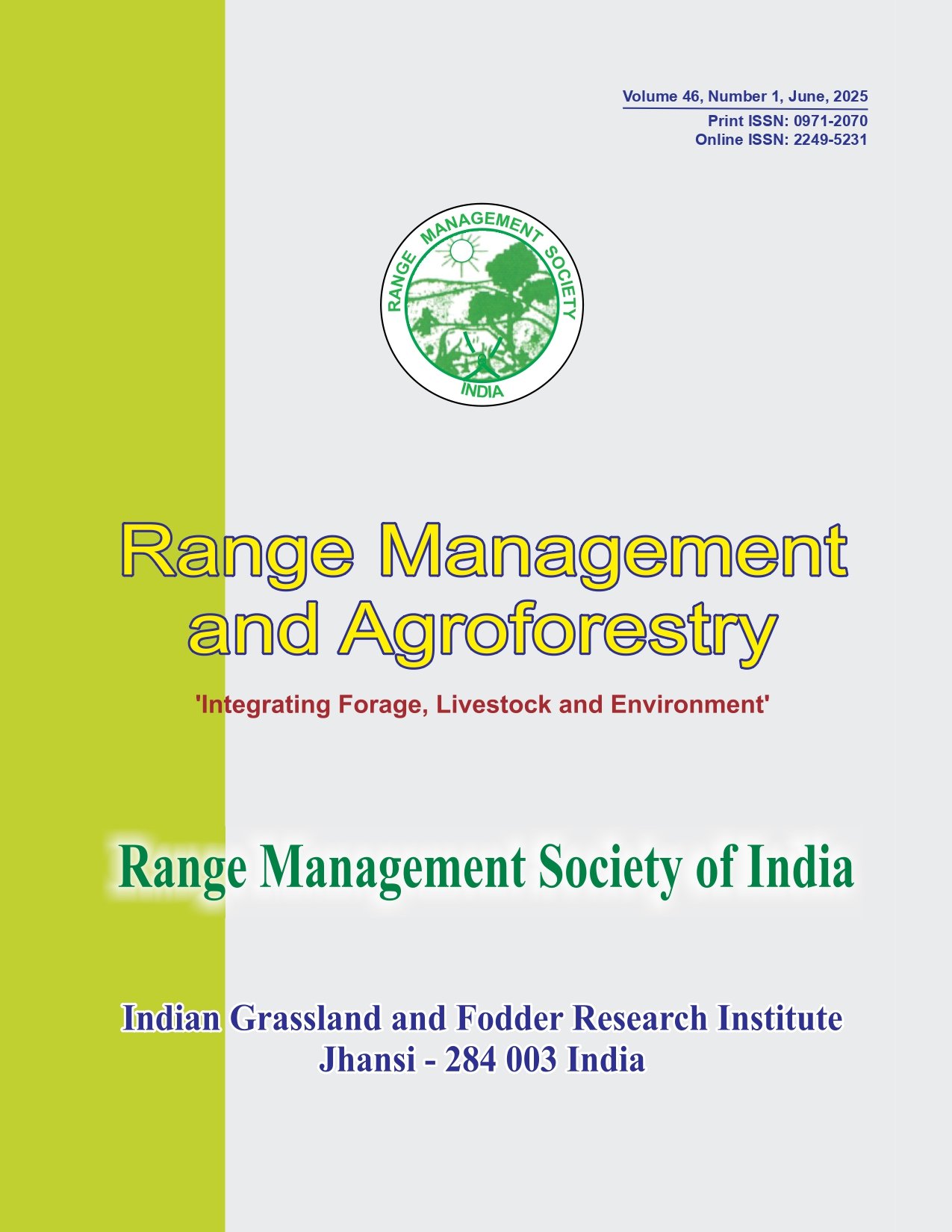Farmer – agroforestry land use adoption interface in degraded agroecosystem of Bundelkhand region, India
Keywords:
Agroforestry adoption, Bundelkhand, Farmer’s perception, Land use, WatershedAbstract
The studies on agroforestry development was conducted on 80 household during 2005-2008 in Garhkundar-Dabar watershed with an aim to analyze farmer’s willingness to plant trees on crop lands, reasons prohibiting its adoption, choice of tree species, system of plantation and the actual adoption of agroforestry over the years. During the course of study, farmer’s willingness to adopt agroforestry land use increased by 50% (45% for fruit trees and 5% for timber trees) with time due to constant persuasion and developmental activities particularly water harvesting and management. Nearly 44 and 53% of the farmers preferred boundary plantation system for fruit and timber trees, respectively. Source of inspiration with respect to choice of species changed with time and was considerably influenced by demonstrations (34%) and expert advice (44%). Efficient land use (41%) and high production and income producing capability (31%) were the main motives of farmers to adopt agroforestry. Farmer considered reduced damage from hot and cold winds (24%), improved soil fertility (21%), reduced weed growth (20%) and improved microclimate (15%) as major positive tree crop interactions while competition for light and space (74%) and for soil moisture and nutrients (24 %) emerged as negative interactions. Adoption of agroforestry land use was very slow even after subsidy offers but it increased steadily to the extent that within three years not only farmers from within watershed area but also from neighbouring area started approaching for inclusion of trees in their farmlands




